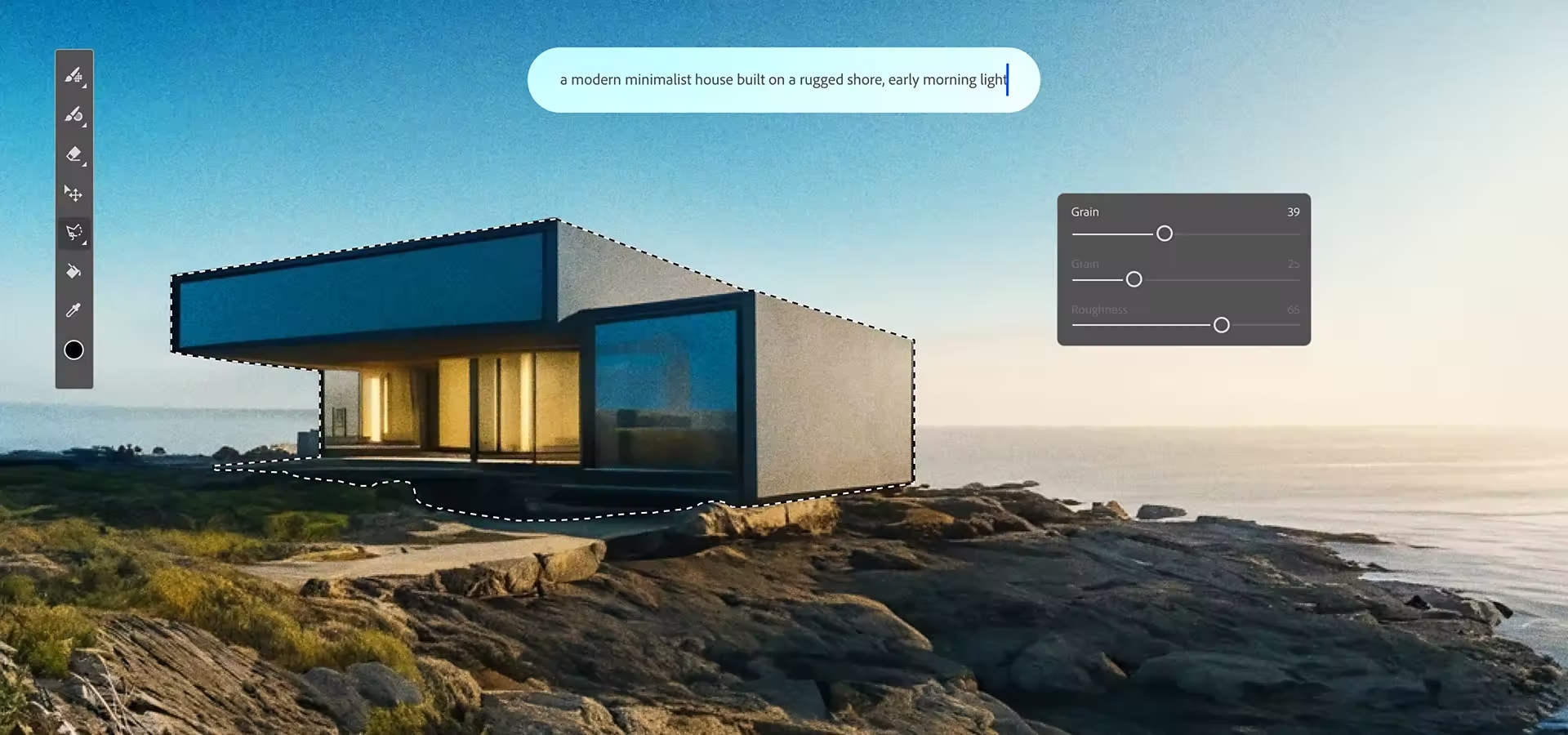Adobe Firefly, Adobe’s big bet with AI

On 21 March, Adobe launched a new tool where artificial intelligence (AI) will allow any user to create content from scratch from a short written text description (prompt). Adobe Firefly will be a paid-for tool in the future, but currently it is free for the AI to learn the user’s requests. You will only need to have an Adobe account and sign up for a queue to access the application.
This new tool will be integrated directly into Adobe’s suite of applications. It is an artificial intelligence tool that’s main objective is to generate images from text. All you have to do is describe what you want to obtain and in a few seconds, Firefly will generate an image from scratch with the possibility of choosing different results that best fit your project. Adobe has launched this novelty to compete directly with other tools such as Dall-E 2 or MidJourney.

The tool allows you to interact with Adobe’s different editing options to improve the results. For example, in Photoshop, you can ask it to generate content, vectors or brushes to the images that you are editing with a simple request. Another mind-blowing feature is that it allows you to generate the continuation of an image, from the global understanding of the image, and subsequently it gives you a result that looks like magic. Adobe claims that:
“You can’t harness the full power of technology without any imagination to fuel it”.

The rise of new tools that implement artificial intelligence has opened up an important debate about how it can potentially affect the work of professionals such as photographers, illustrators or designers.It is natural to have this debate, as these new tools make the creation of new content available to a wider non-professional audience.
We do not believe that these new AI-powered tools put the work of professionals at risk. The knowledge and skill required to correctly apply these tools in a workflow is very high, so most professionals should invest a lot of time to learn how to get the most out of them.
In fact, many professionals do not perceive this type of tool as a risk, but as a new way to better optimise their time. As they can help them to speed up creative processes such as the generation of new ideas or proposals, it allows them to spend more time on improving other aspects of the project.
Although artificial intelligence is demonstrating its great potential, it is important to keep ethics and responsibility in mind when developing and applying AI in the professional environment. While it cannot replace human creativity and intuition, it can complement our capabilities and help us to solve problems more efficiently. And you, what do you think the future powered by artificial intelligence will look like?
Each image in this article was made by various creators with the help of Firefly, Original source: Adobe®.










